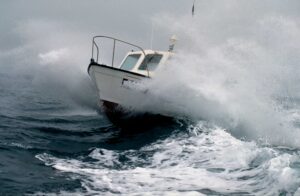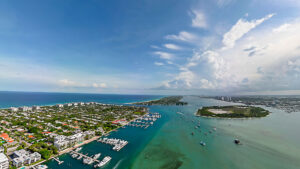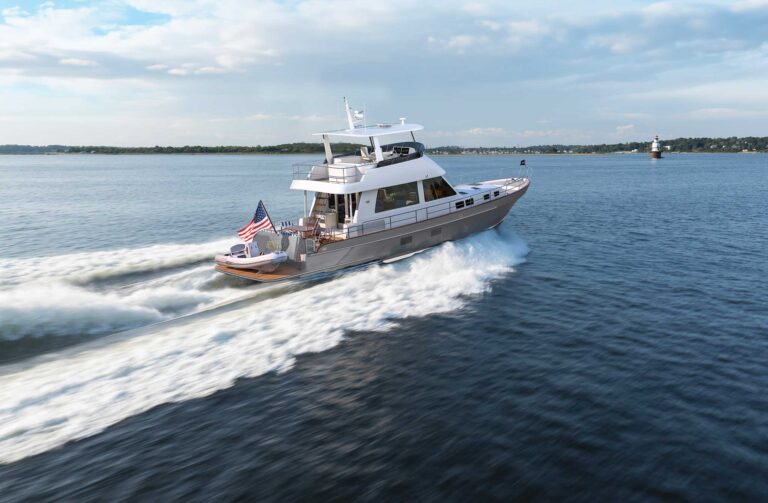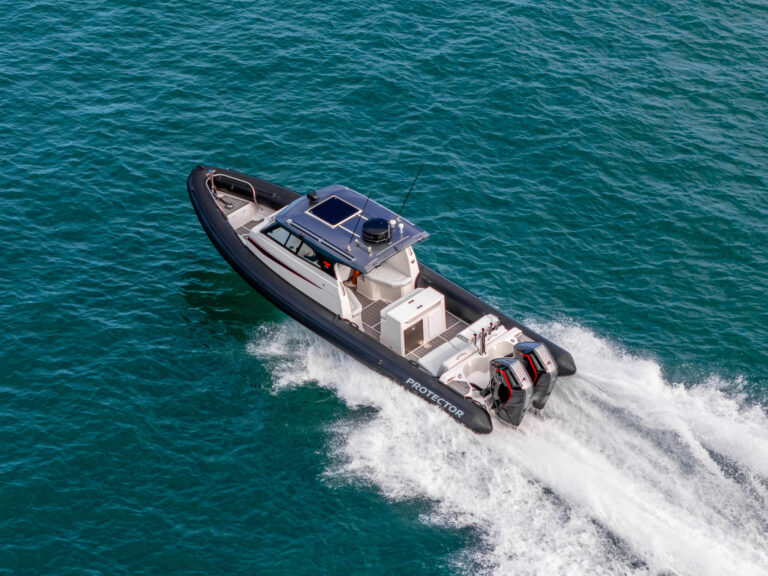Trailering a boat to a local launch ramp is a lot different from trailering long distances. The farther you travel and the larger the boat is, the more challenges you face.
I have learned this through experience. I ordered a Pathfinder 2700 Open toward the tail end of the pandemic. Not only was construction delayed, but delivery to the New Jersey dealer was also a problem. My new baby was sitting on its Amera Trail trailer at the Maverick Boat Group facility in Fort Pierce, Florida, just as fall fishing in the Northeast was heating up. So, I inquired about trailering the boat home myself.
Charlie Johnson, the group’s marketing manager, got wind of the situation and called with a proposition. He needed a Pathfinder with Yamaha’s Helm Master EX to shoot a segment in Florida for an upcoming show. My boat fit the bill, so I agreed to let him use it in exchange for help prepping everything I’d need for the boat’s long haul home.
My Ram 1500 pickup has a 5.7-liter V-8 with a Class V receiver, a hitch bar and a ball sized to fit the trailer. I packed tools and a hydraulic jack in case of a flat, upgraded my trailer insurance policy, and was confident that I had enough experience for the journey. I’d been trailering a 23-foot center console with an 8-foot beam behind a Ford Explorer for a few years. How much harder could it be to pull a 27-foot boat with a 9-foot, 3-inch beam for 1,200 miles? Turns out it was more challenging than anticipated.
My truck, boat and trailer totaled 51- feet long, 9-feet six-inches wide and 12-feet six-inches high. My pickup handled the boat well, and although the truck and trailer brakes provided plenty of stopping power, I learned that pulling and slowing the rig required extra attention, both on and off the interstate.
On the truck-only southbound ride with my wife, Ginger, as my copilot and navigator, we averaged about 22 miles per gallon. I was making a fuel stop about every 400 miles. With the boat and trailer attached on the northbound route, our highway mileage dropped to about 10 miles per gallon, which meant a fuel stop every 200 miles.
But frequency of fuel stops wasn’t my only concern. Juggling the rig into smaller gas stations off the interstate was difficult, especially stations with tight turns into the pump lanes. The frustrated looks we got as I blocked two or three pumps were disconcerting. We learned quickly that truck stops were a superior alternative, so Ginger used an app to plan our route.
While the width and height of the boat and trailer was fine on most highways, things got tight in places. The 55-mph tow through the Baltimore Harbor Tunnel was a white-knuckle ride with inches to spare on each side.
Tolls for dual- and triple-axle trailers are double or triple the single-car price, so E-ZPass makes paying a lot easier. If Florida is on the itinerary, then apply for a SunPass in advance.
We made it back to New Jersey in two long days with an overnight in Raleigh, North Carolina. It was a learning experience, but there is more to consider with even larger boats and trailers.

For that, I turned to Capt. Dave Schunke, in Point Pleasant, New Jersey, who hosts the Fish Circus show. Filming takes him up and down the East and Gulf Coasts, trailering monohulls and catamarans up to 42 feet long. He has more than 100 trips under his belt.
“If you’re towing a boat over 9 feet, 6 inches, you’ll need permits in most states,” Dave says. “Our 42-foot Prowler is 12-feet wide and 14-feet high, so we need oversized-load permits everywhere and also deal with height restrictions.”
There are two ways to acquire permits, he says: do-it-yourself, which is time consuming and complicated, or use a service. Dave does the latter, with J.J. Keller Permit Service out of Neenah, Wisconsin.
“They apply for all the permits and provide comprehensive route planning based on the dimensions of the truck and trailer,” Dave says. “Wide-load permits come with additional regulations like special lighting on trailers and tow vehicles, and prohibitions on towing at night, or on weekends. When we go to the Keys, the reverse is true. We can only tow at night with a special escort, usually a police vehicle.”
Towing is much easier when the boat’s beam is smaller than 9 feet, 6 inches, he says, “but long-hauling any boat comes with increased trailer maintenance.”
Dave is adamant about having his trailers in top condition for long trips, and doubly so with the biggest boats. Prior to a trip, he has a professional boat-off inspection and service done to the trailer, with special attention to the hub bearings and brake rotors. Bearings are inspected for wear and play, replaced if necessary, and greased. Tires are checked for wear and proper inflation, and suspension components are inspected.
“I carry an infrared laser thermometer and make it a point to check the trailer wheel hubs and rotors at each gas stop as an early warning that a problem might be developing,” Dave explains. “I carry spare hub and brake rotor assemblies, and have gotten quite proficient at changing them quickly on the side of the road.”
Dave recommends membership in a trailer-towing service and the purchase of quality towing insurance. If a major problem occurs, trying to get your rig off the road to a safe place for repairs could leave you at the mercy of folks who are less than trustworthy.
Regardless of the boat’s size, trailering long distances requires a much higher degree of preparation than short hops. With an appropriate tow vehicle, a little research and a well-tuned and maintained trailer, you can do it.
This article was originally published in the September 2024 issue.











